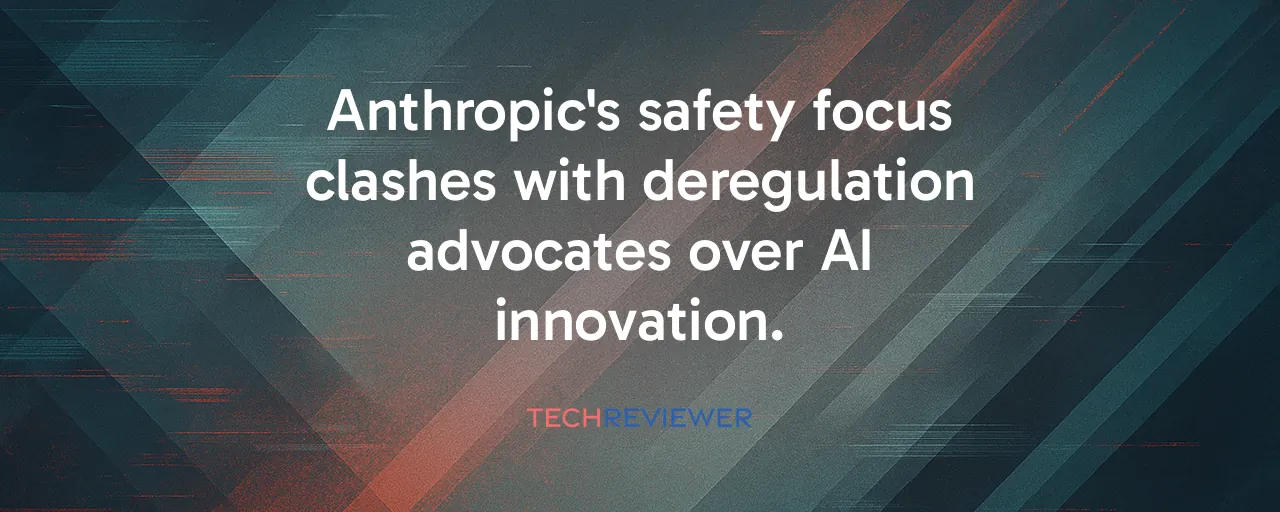A Clash Over AI's Future
Anthropic, a rising star in artificial intelligence valued at $18.3 billion, finds itself in the middle of a heated debate. The company, founded by former OpenAI researchers, champions a vision where AI serves humanity without spiraling into chaos. But its push for safety measures has drawn fire from Trump administration officials like David Sacks, who accuse Anthropic of fear-mongering to choke startup innovation. This clash, erupting in October 2025, reveals a deeper struggle: how to harness AI's immense power while keeping it from veering off course.
The spark came when Anthropic co-founder Jack Clark penned an essay, describing AI as a powerful yet unpredictable force. His words, meant to highlight the need for careful oversight, triggered a swift backlash. Sacks, the White House AI czar, called Anthropic's stance a 'regulatory capture strategy' that fuels a state-level frenzy, hurting smaller players. Meanwhile, California Senator Scott Wiener, who authored the state's AI safety bill SB 53, defended Anthropic, arguing that federal inaction leaves states no choice but to step up.
Constitutional AI: A New Playbook
At the core of Anthropic's approach lies Constitutional AI, a system that uses written principles, like those drawn from the UN Declaration of Human Rights, to guide AI behavior. Unlike traditional methods relying on human oversight, this technique lets AI critique and refine its own outputs, aiming to be both helpful and harmless. It's a bold step toward scalable safety, especially for frontier models requiring massive computational power, such as systems trained with over 10 to the power of 26 floating-point operations. Anthropic's Claude chatbot, built on this framework, showcases its potential to deliver value while minimizing risks like toxic outputs or bias.
This innovation goes beyond technical jargon, addressing real challenges, like defending against 'jailbreaks' where users trick AI into harmful behavior. By embedding safety into the model's core, Anthropic aims to reduce the need for humans to wade through disturbing content, a problem that's plagued social media moderation for years. Yet, critics like Groq COO Sunny Madra argue this focus on safety creates chaos for an industry racing to innovate, accusing Anthropic of slowing progress to protect its market position.
Lessons From California's SB 53
California's SB 53, signed into law in September 2025, offers a case study in state-led AI governance. The bill targets frontier AI developers with revenues over $500 million, requiring them to publish frameworks addressing catastrophic risks, such as scenarios causing over 50 deaths or $1 billion in damage. It also mandates transparency when AI influences decisions, like in hiring or healthcare, and includes whistleblower protections for employees flagging safety concerns. For Anthropic, which supported measured state regulations, SB 53 aligns with its mission to balance progress with accountability.
Contrast this with the Trump administration's push for deregulation. In July 2025, the White House's AI Action Plan prioritized American dominance through minimal oversight, emphasizing a unified 'American AI Technology Stack' from chips to applications. Sacks and advisor Sriram Krishnan argue that state laws like SB 53 create a patchwork that stifles startups, which face compliance costs of 15-20% at seed stage or up to $500,000 annually for growth-stage firms. The tension highlights a broader question: Can states lead without fracturing national innovation?
OpenAI's Shadow: A Parallel Path
Anthropic's journey echoes OpenAI's earlier struggles, offering another case study. Founded in 2015, OpenAI faced internal debates over safety versus speed, leading to Anthropic's creation in 2021 by defectors like Dario Amodei. While OpenAI now dominates with ChatGPT, its pivot to rapid deployment raised safety concerns, prompting calls for governance. Anthropic, by contrast, doubled down on safety through Constitutional AI, yet both face similar pressures: balancing innovation with public trust in an industry where global venture capital hit $120 billion in Q3 2025 alone.
The lesson? Neither company operates in a vacuum. OpenAI's lobbying against state regulations mirrors the Trump administration's stance, while Anthropic's cautious approach finds allies in academics at the Center for AI Safety. Both cases show that AI's unpredictability, rooted in Moravec's paradox where systems excel at complex tasks but stumble on simple ones, demands a nuanced approach. Rushing AI deployment risks unintended consequences, but overregulation could hand competitors like China, with its Made in China 2025 strategy, an edge.
Balancing Speed With Stability
The Anthropic controversy underscores a tightrope walk: how to innovate without inviting catastrophe. Supporters of deregulation, like Sacks, point to AI's proven benefits, such as healthcare diagnostics, code generation, and scientific discovery, as evidence that speed drives progress. Yet, safety advocates highlight risks like AI-enabled cyberattacks or deepfakes eroding public trust, issues SB 53 aims to address. Anthropic's Constitutional AI offers a middle path, embedding guardrails without halting development, but its critics argue it tilts too far toward caution.
Finding common ground could be key. Both sides agree on maintaining American leadership against rivals like China. Public-private partnerships, like AI sandboxes for testing innovations, could bridge the gap, letting developers experiment while regulators gather data. Transparency requirements, such as disclosing AI's role in decision-making, also find broad support. As AI integrates into critical systems, from hospitals to elections, the stakes are too high for either side to ignore the other's concerns. Anthropic's fight isn't just about one company; it's about shaping AI's role in our world.
